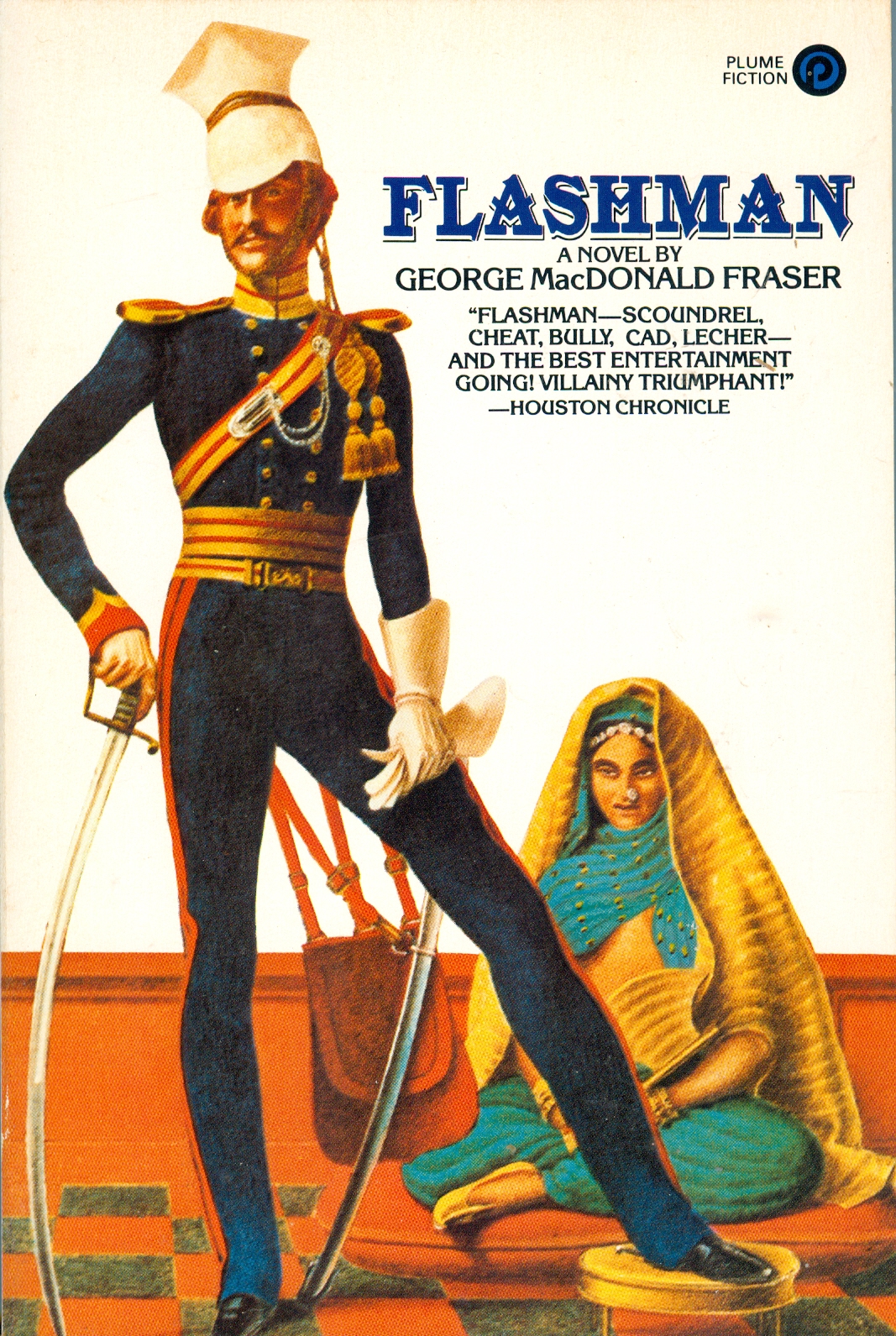
Plume trade paperback
The period from the early 1960s to around 1980 was the golden age for mass market paperback illustration. I covered the fantasy side of things last year with the “Sword and Sorcery Artist” entries.
An entertaining historical series are the “Flashman Papers” by George MacDonald Fraser (1925-2008). Fraser served in the British Army from 1943-1947 in Burma and North Africa.
Fraser took Harry Flashman from the novel Tom Brown’s School Days (1859), a character expelled for drunkenness. Fraser made him into his hero. Flashman’s father buys a commission in the British Army for his son. Harry Flashman is a lecher, sometimes cowardly, has a knack for native languages and disguises. He is also present at various disasters of the British Army.
The first novel Flashman came out in 1969. This covers the years 1839-1842 where Flashman is present at the disaster of the British East India Army at Kabul.
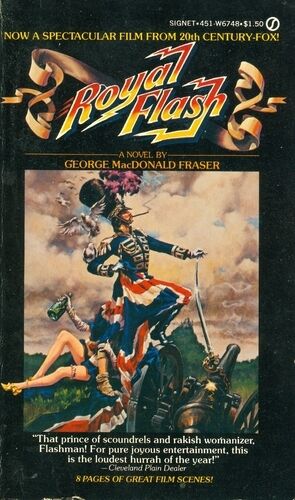
Movie Tie-In
Royal Flash (1970) has Harry Flashman entangled in political shenanigans in Germany involving Otto von Bismarck (1842-1848). This was made into a movie in 1975 starring Malcolm McDowell as Harry Flashman.
Four more novels would follow in the 1970s, two in the 1980s, three in the 1990s, and the last in 2005.
The books have been in print continuously the whole time. New American Library’s Signet imprint published the mass market paperbacks in the 1970s. I began reading the books in the mid-90s when Plume (a division of Penguin) had been publishing them since the early 80s.
The Flashman books got a push with one novel serialized in Playboy and another excerpted.
New American Library must have been serious about pushing the Flashman books as Frank Frazetta illustrated the covers for Flash for Freedom! (1971) and Flashman at the Charge (1973).
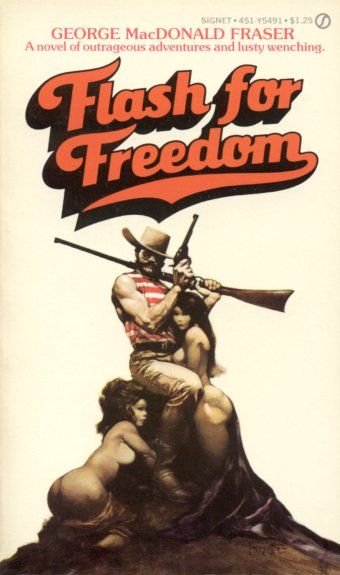 Frazetta only did two covers. Next came Don Maitz for the cover for Flashman and the Great Game (1975).
Frazetta only did two covers. Next came Don Maitz for the cover for Flashman and the Great Game (1975).
It was at this time that the paperbacks were reissued with a uniform font and logo similar to the movie poster.
Flashman’s Lady (1979) is the last of the interesting covers. I have not been able to identify the artist.
After this, the Plume imprint took over with Flashman and the Redskins in 1983. The covers became not interesting. The books were also trade paperbacks instead of glorious mass market paperbacks.
Once again, 1980 was the year that paperback book covers changed and not for the better. It would have been interesting to see Frank Frazetta do four or five covers but that was not meant to be.
I rarely see Flashman paperbacks from the 1970s in used book stores. I don’t even have any of them. Finding even good pictures online of the Signet editions is hard. People just don’t give up their Flashman books.
The Flashman books have a flair so often missing in fiction. They are both funny but have great action going on at the same time. That is a tough balance to achieve.
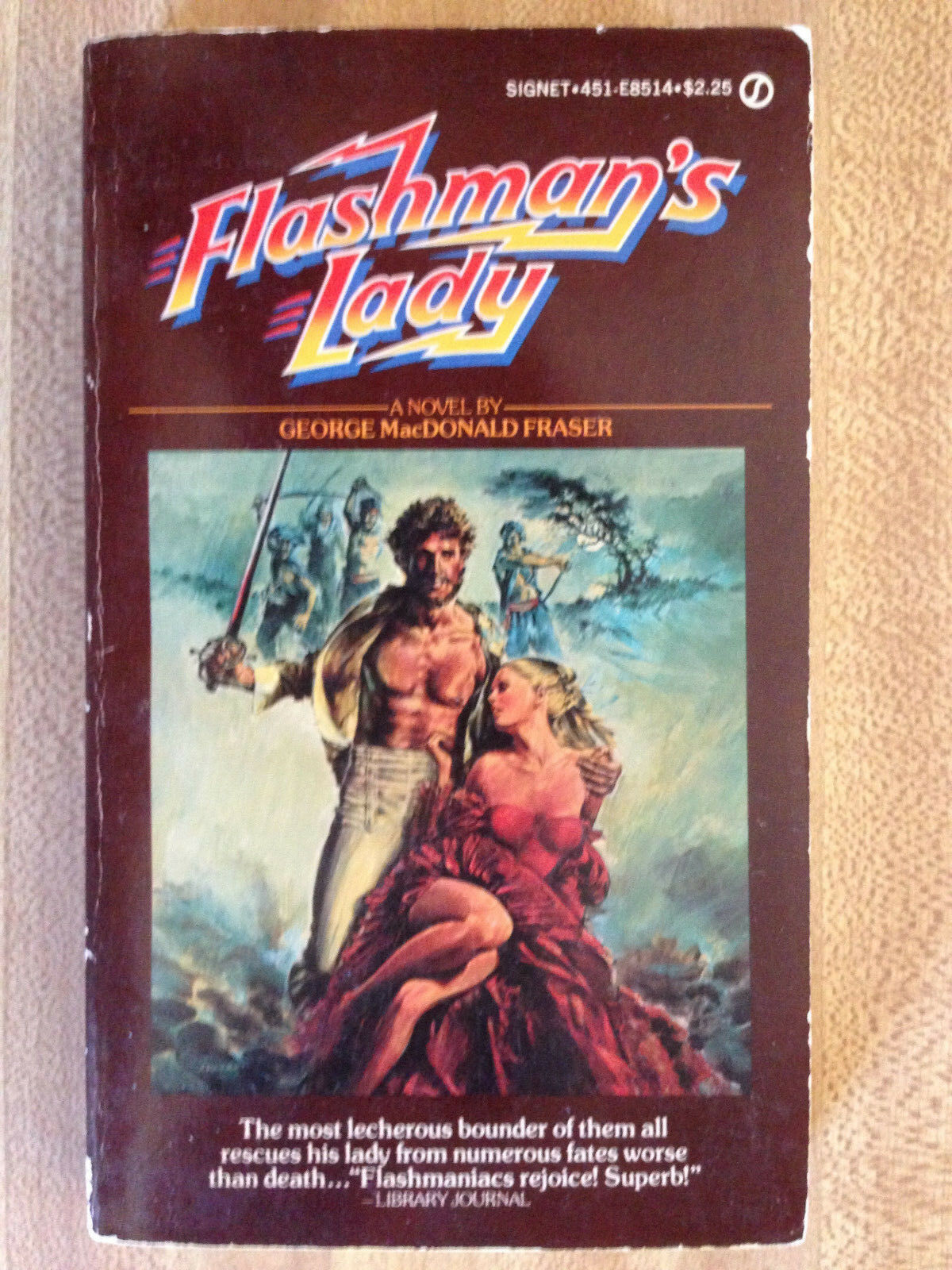
Who did this cover?
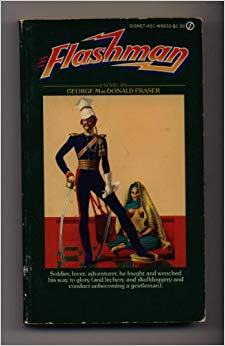
Signet Mass Market Paperback
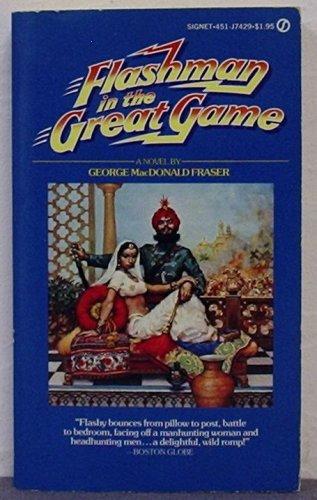
Don Maitz Cover
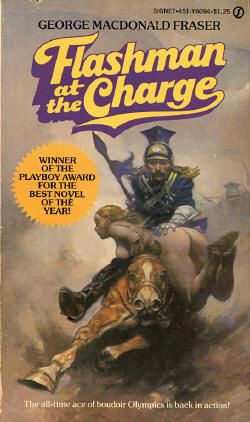
I have the Signet FLASH FOR FREEDOM. One of Frank’s underappreciated covers during his 1970-1976 prime.
Flash for Freedom looks like a poster for a Burt Reynolds movie that should have been but never was.
” Harry Flashman is a lecher, sometimes cowardly,…”??
Sometimes cowardly??? Flashman is a very consistent coward. The fact that he keeps being mistaken for a hero is due to his looking the part, being a first class liar and a generous measure of luck. Some reviewer (and I wish I remembered who so I could give proper credit) dubbed Flashman “The Ace of Cads.” I have always thought that a very exact description.
By the way, Flashman has an interesting cameo role in GMF’s novel “Mr. American”. This is set in Edwardian England and we get to see Flashman in his last years through the eyes of the title character.